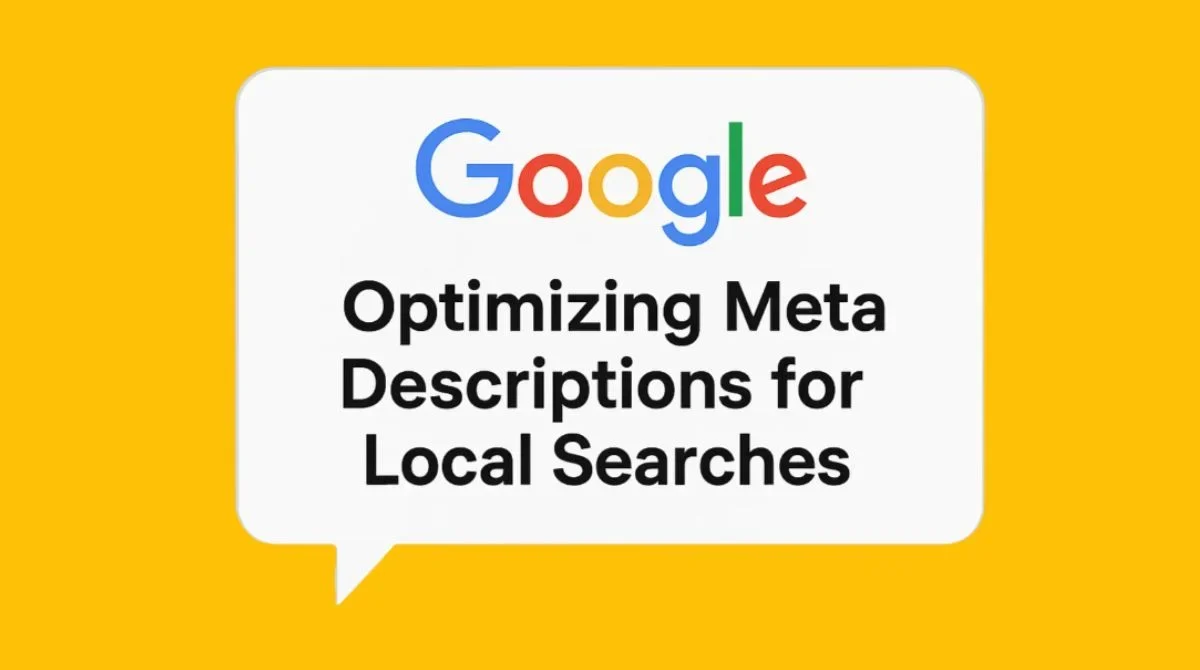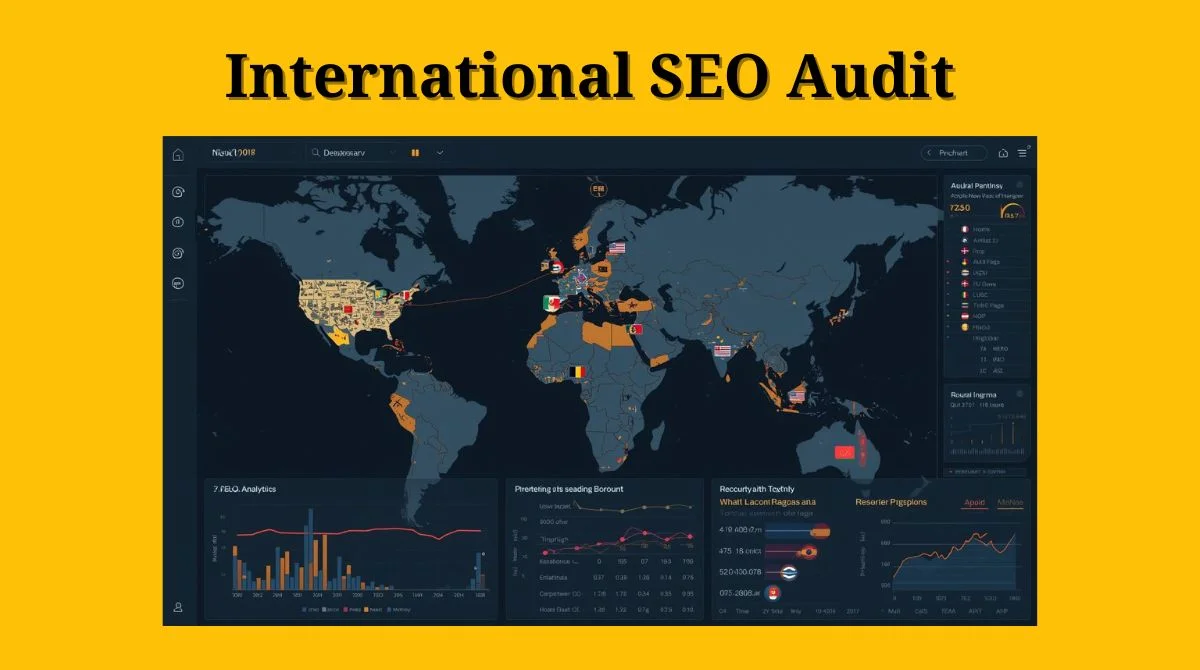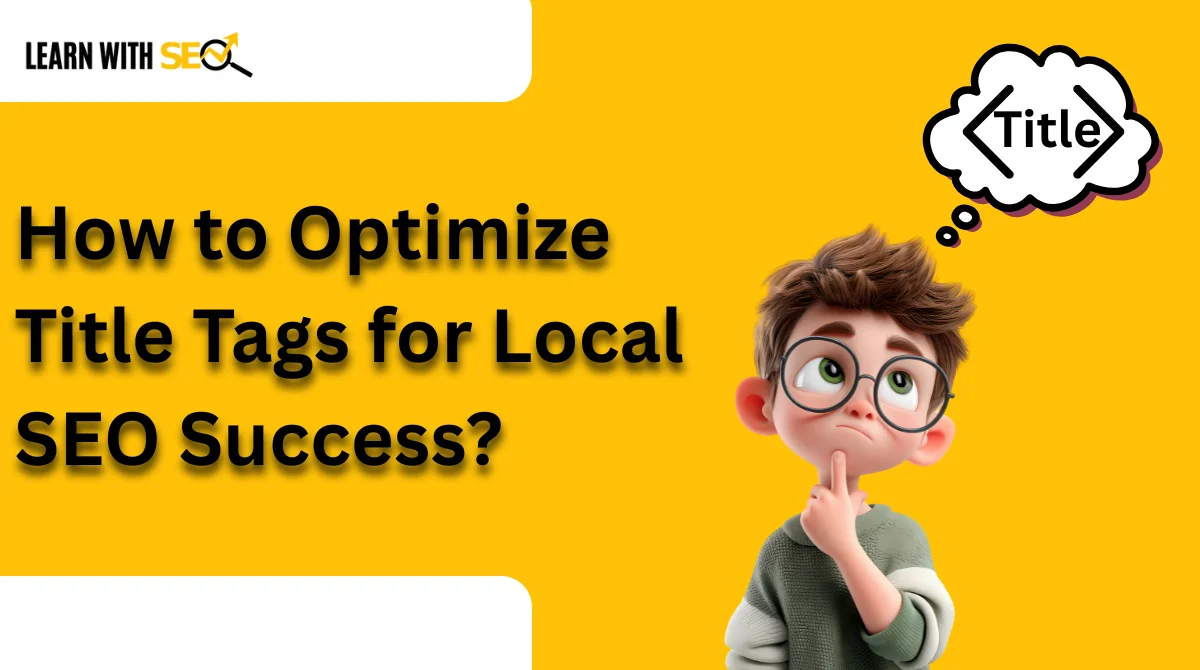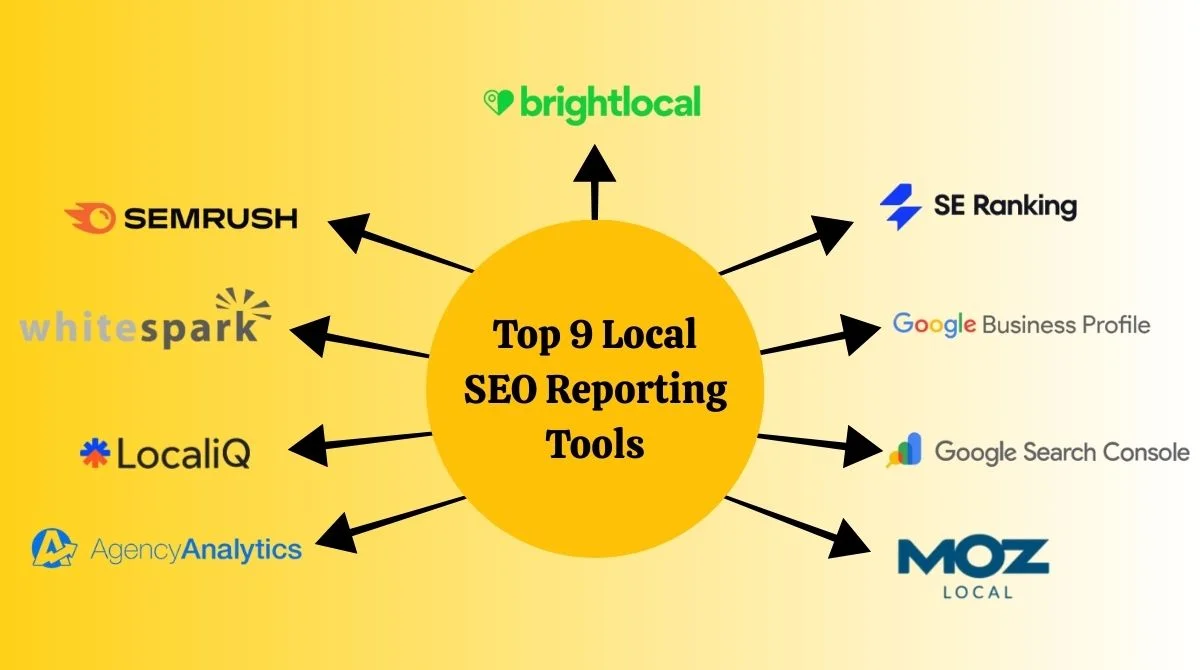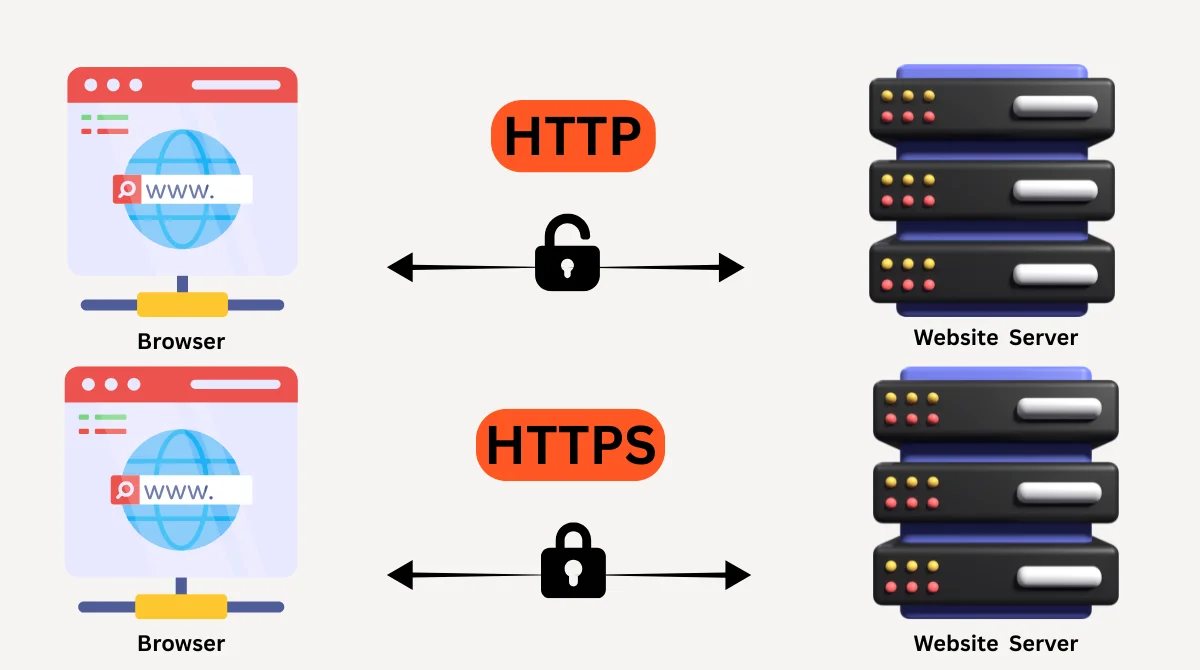- What Are Meta Descriptions in Local SEO?
- Why Meta Descriptions Matter for Local Searches?
- Best Practices for Local Meta Descriptions
- Common Mistakes to Avoid
- How to Write Compelling Local Meta Descriptions?
- Technical Implementation Tips
- Measuring Success
- Advanced Local Meta Description Strategies
- Future-Proofing Your Meta Descriptions
- Conclusion
Local businesses need every advantage to stand out in search results. Meta descriptions play a crucial role in attracting local customers to your website. This guide shows you exactly how to write meta descriptions that drive local traffic and improve your search rankings.
What Are Meta Descriptions in Local SEO?
Meta descriptions are short snippets that appear under your page title in search results. They give users a preview of what they’ll find on your webpage. For local businesses, these descriptions are your first chance to connect with nearby customers.
Search engines use meta descriptions to understand your page content. When done right, they can significantly boost your click-through rates from local searches.
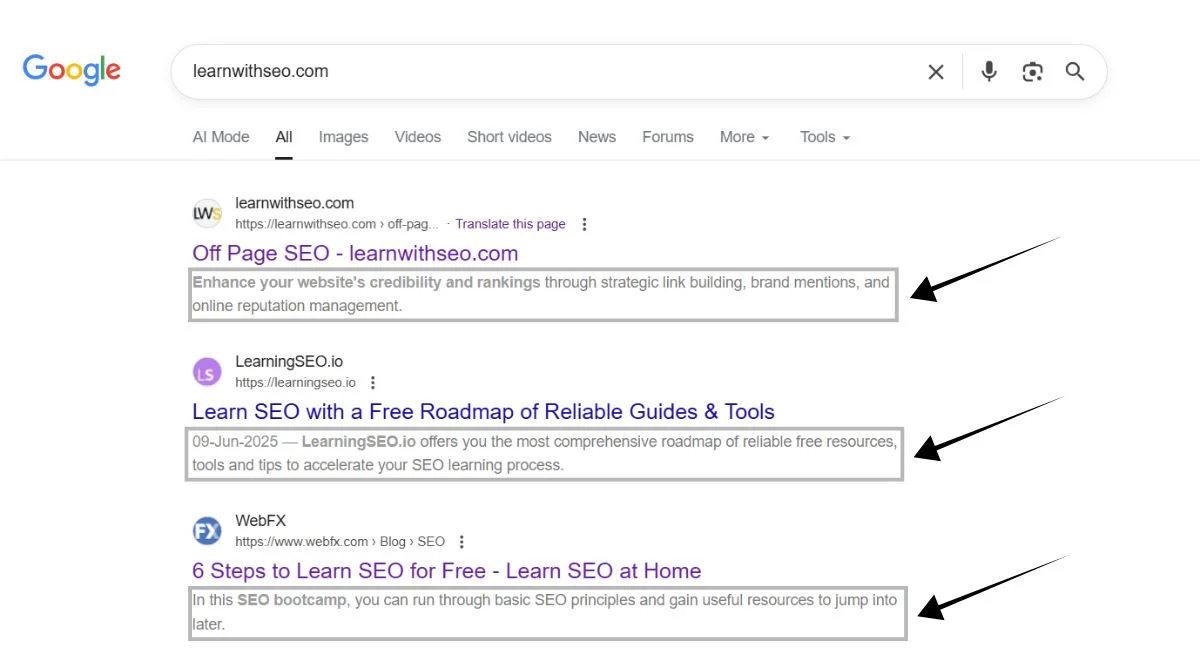
Why Meta Descriptions Matter for Local Searches?
Local searches have unique characteristics that make meta descriptions extra important. People searching locally often have immediate needs and want quick answers.
In 2025, search engines will focus on intent-based, conversational phrases rather than rigid keyword optimization. This shift makes well-crafted meta descriptions even more valuable for local businesses.
Here’s why they matter:
- Immediate visibility: Your description appears right in search results.
- Local context: You can highlight your location and service area.
- Trust building: Professional descriptions build credibility.
- Higher click rates: Good descriptions encourage more clicks.
Best Practices for Local Meta Descriptions
Keep the Right Length
The ideal length for meta descriptions is 150-160 characters for desktop and 120 characters for mobile. This ensures your full message appears without being cut off.
Count characters, not words. Every character matters when space is limited.
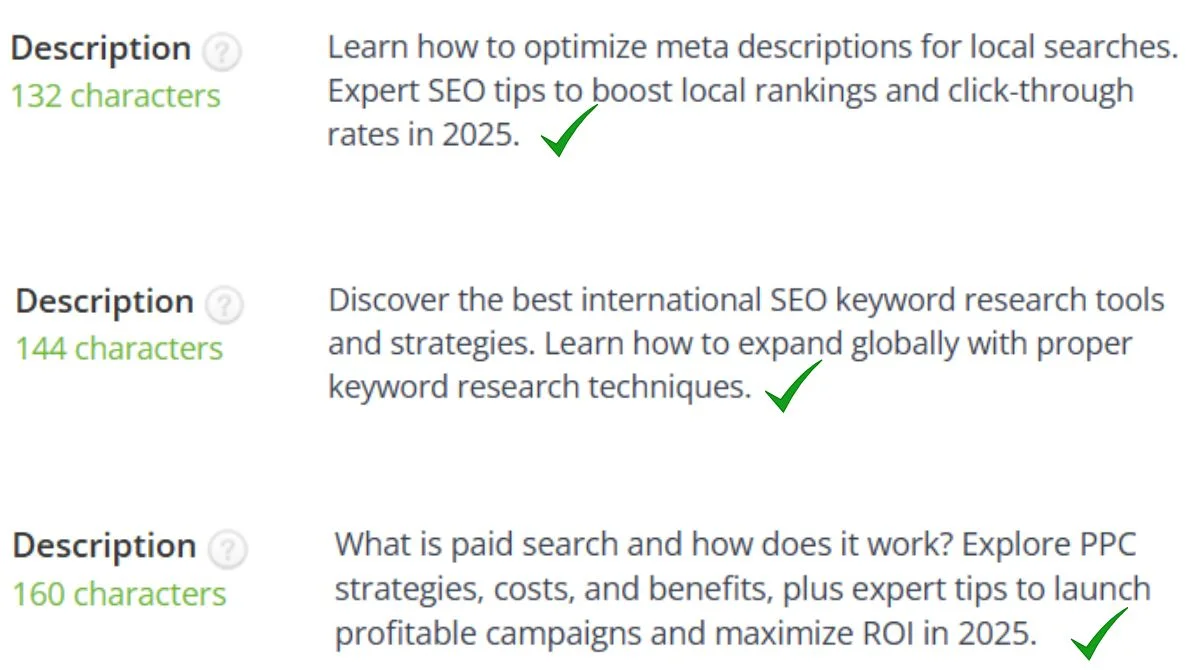
Include Location Information
Always mention your city, neighborhood, or service area. This helps search engines connect your content with local searches.
Examples of location inclusion:
- “Best pizza delivery in downtown Chicago”
- “Expert plumber serving Austin and surrounding areas”
- “Wedding photographer in Brooklyn, NY”
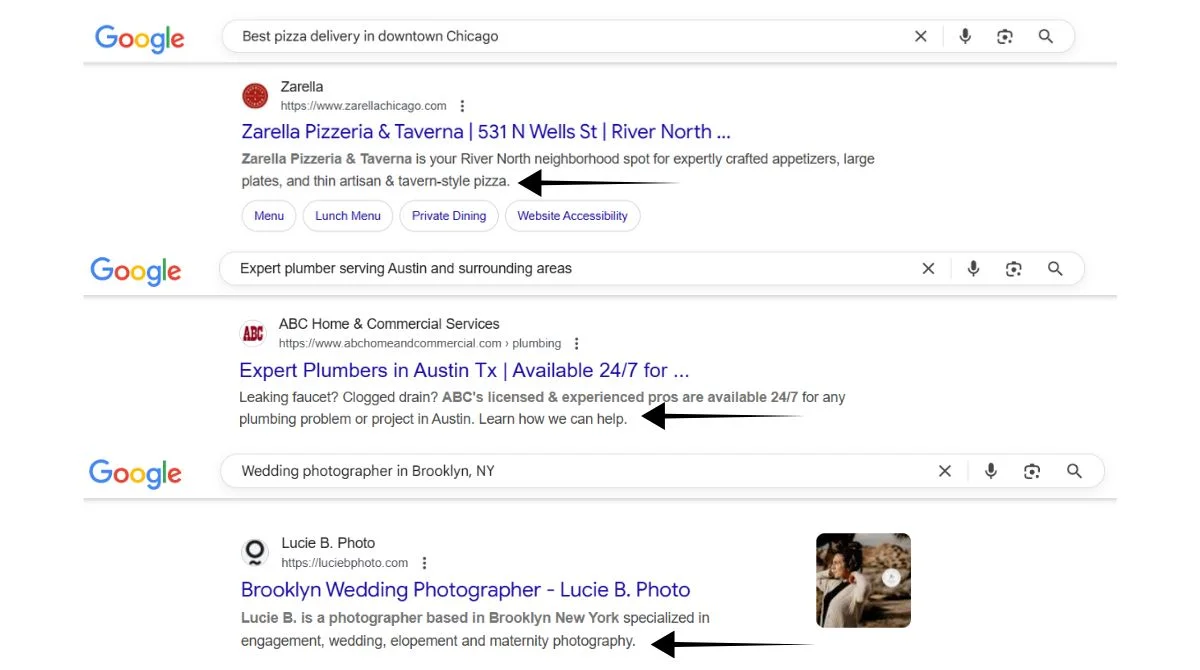
Use Action-Oriented Language
Address user queries directly with intent-first language. Tell people exactly what they’ll get when they visit your page.
Strong action words for local businesses:
- “Get instant quotes”
- “Book your appointment today.”
- “Find locations near you”
- “Call now for same-day service.”
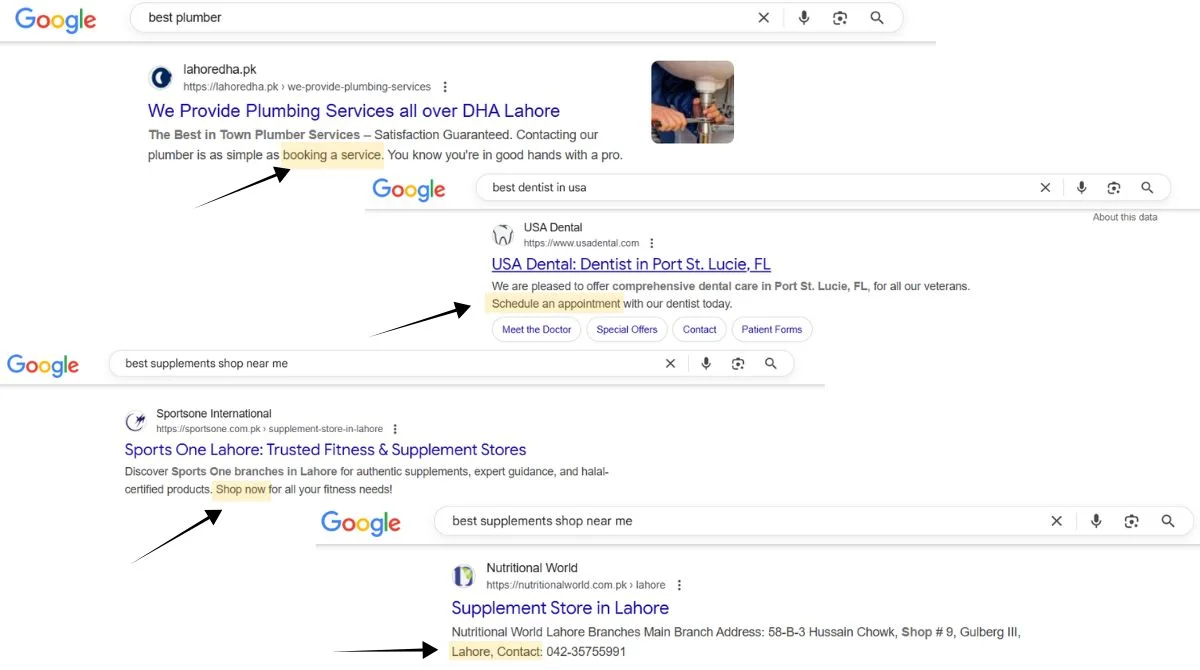
Focus on Local Benefits
Highlight what makes your local business special. Mention things like:
- Years serving the community.
- Local awards or recognition.
- Community involvement.
- Unique local expertise.
Common Mistakes to Avoid
Keyword Stuffing
Don’t cram too many keywords into your meta description. Focus on naturally reflecting the page content without overloading with keywords.
Search engines can spot keyword stuffing and may penalize your rankings.
Generic Descriptions
Avoid duplication as unique descriptions prevent SEO dilution. Each page needs its own unique meta description tailored to that specific content.
Never use the same description across multiple pages. This confuses search engines and reduces your effectiveness.
Missing Call-to-Action
Every meta description should tell users what to do next. Whether it’s “call now,” “visit us,” or “get directions,” give people a clear next step.

How to Write Compelling Local Meta Descriptions?
Start with Your Main Benefit
Lead with the most important thing you offer. What problem do you solve for local customers?
Example: “Emergency AC repair in Miami – 24/7 service, licensed technicians, 30-minute response time.”
Include Social Proof
Mention ratings, reviews, or years in business when possible. This builds trust before users even click.
Example: “5-star rated dentist in Seattle with 15+ years of experience. New patient specials available.”
Create Urgency When Appropriate
For time-sensitive services, create urgency in your description.
Example: “Same-day iPhone repair in Boston. Walk-ins welcome, most repairs done in 30 minutes.”
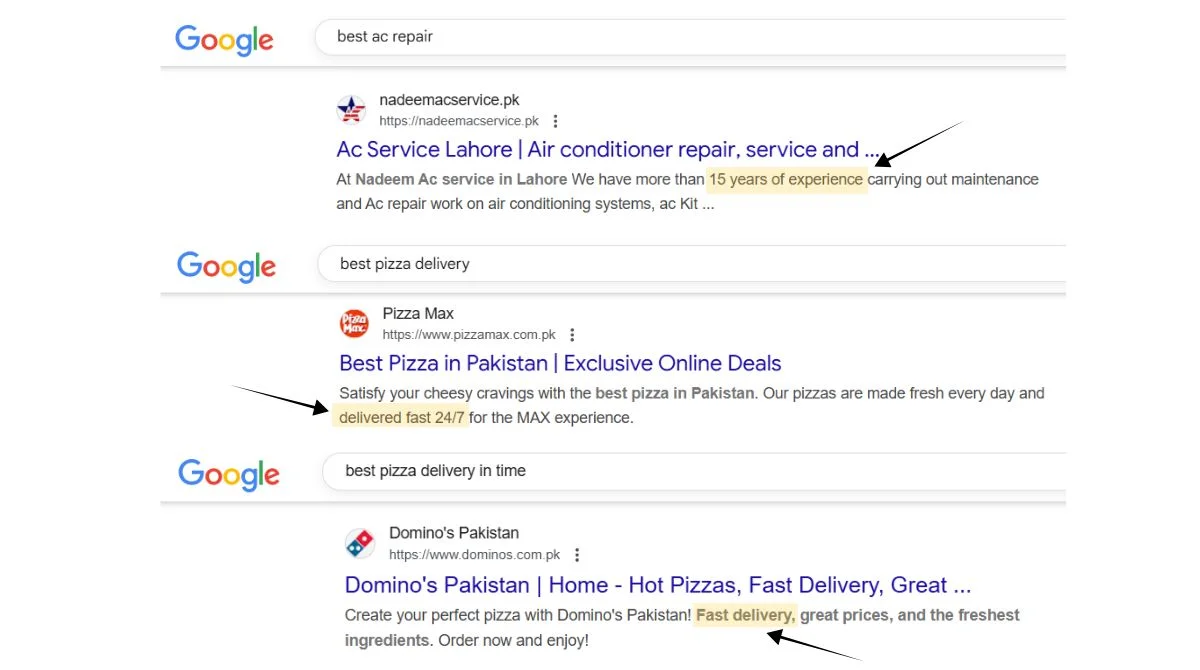
Technical Implementation Tips
HTML Implementation
Add meta descriptions directly in your page’s HTML head section:
-
html<meta name="description" content="Your optimized local meta description here">
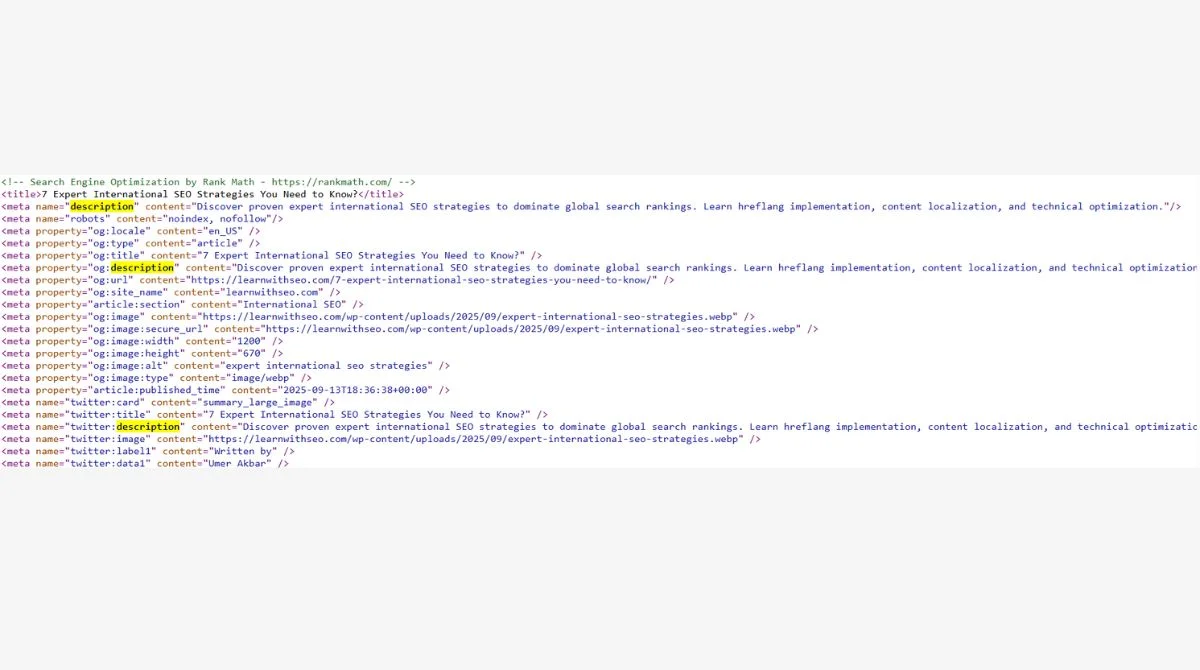
Content Management Systems
Most CMS platforms like WordPress offer easy ways to add meta descriptions through plugins or built-in fields.
Popular SEO plugins that help:
- Yoast SEO.
- RankMath.
- All-in-One SEO.
Regular Updates
SEO metadata is no longer a “set it and forget it” task. Review and update your meta descriptions regularly based on:
- Seasonal changes in your business.
- New services or products.
- Performance data from the search console.
- Changes in local competition.
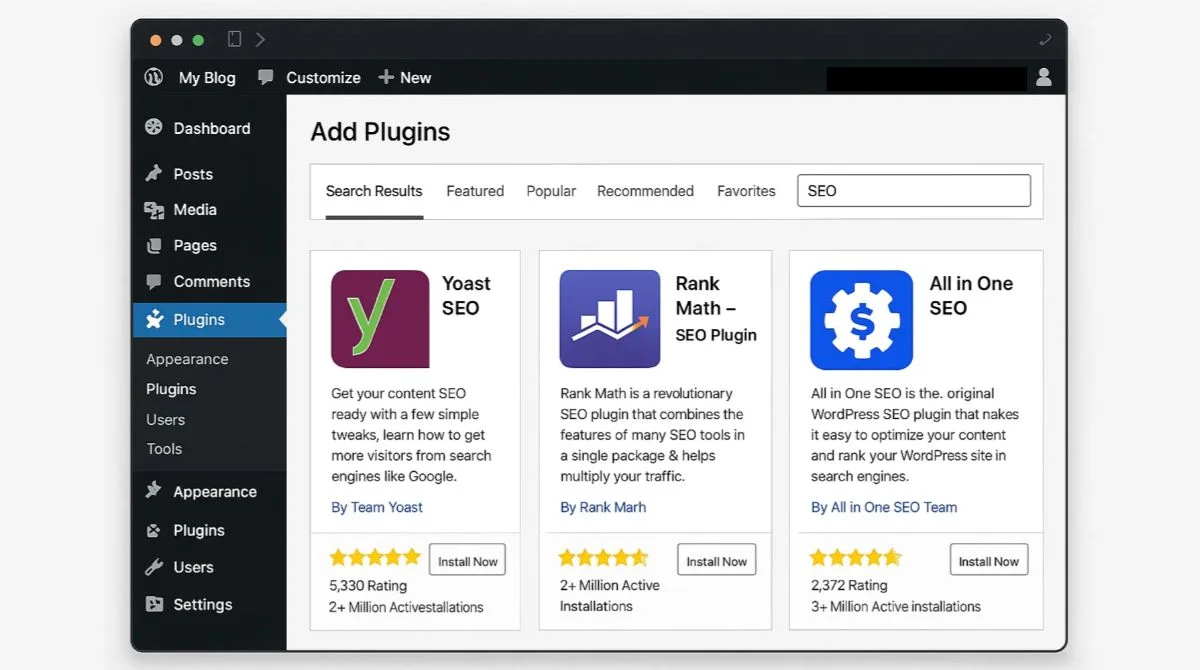
Measuring Success
Key Metrics to Track
Monitor these metrics to see how your meta descriptions perform:
- Click-through rate (CTR) from search results.
- Local search ranking positions.
- Organic traffic from local searches.
- Conversion rates from organic traffic.
Tools for Tracking
Use Google Search Console to see how your pages perform in search results. Look for pages with high impressions but low CTR – these might need better meta descriptions.
Google Analytics can show you which pages get the most local traffic and conversions.

Advanced Local Meta Description Strategies
Schema Markup Integration
Combine meta descriptions with local business schema markup. This gives search engines even more context about your business.
Seasonal Optimization
Update descriptions for seasonal services or promotions. A landscaping business might emphasize snow removal in winter and lawn care in spring.
Multi-Location Businesses
If you serve multiple areas, create location-specific pages with tailored meta descriptions for each area.
Example approach:
- “Austin location: [service] in Central Austin”
- “Dallas location: [service] in Downtown Dallas”
Mobile Optimization Focus
Mobile descriptions should be around 120 characters since mobile screens show less text. Prioritize your most important information first.
Future-Proofing Your Meta Descriptions
- Voice Search Optimization: More people use voice search for local queries. Write descriptions that sound natural when spoken aloud.
- AI and Machine Learning: In 2025, successful meta descriptions prioritize user intent over outdated practices like rigid character limits. Focus on user needs rather than just technical requirements.
- Semantic Search Considerations: Search engines better understand context and meaning. Write descriptions that clearly explain what users will find and how it helps them.
Conclusion
Optimizing meta descriptions for local searches requires balancing technical SEO with compelling copy. Focus on your local audience’s needs and include relevant location information. Start by auditing your current descriptions, then implement these strategies across your website. With consistent effort, you’ll see improved click-through rates and better local search performance.

